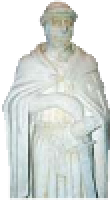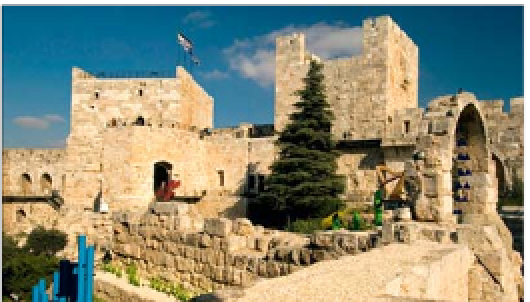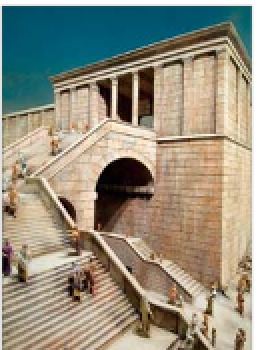Travel Reference
In-Depth Information
Exploring the Citadel
There is a lot to see in the Citadel's Tower
of David Museum. To help the visitor,
there are three well-signposted routes: the
Observation Route runs along the ramparts
for the best panoramic views of the city,
both Old and New; the Excavation Route
concentrates on the archaeological remains
in the courtyard; and the Exhibition Route
takes visitors through a series of rooms
tracing the history of the city. This takes
the form of displays, dioramas and models, rather than
a collection of historical artifacts. Visitors can join a free
English tour of the route departing at 11am Sunday to
Friday, and lasting one and a half hours.
Statue of a
Crusader
Three-dimensional representation
of the Second Temple
Tower, while the First
Temple-era exhibits are
inside the tower. These
include a model of a
19th-century BCEgyptian
statuette bearing the first
written reference to
Jerusalem. There is also
a model of the 10th-
century City of David,
prior to the building
of the Temple, a
hologram of the
Temple itself, and
an informative
animation
showing how
the ancient
city's water system
worked. The latter is
very useful for any-
one who intends
visiting Hezekiah's
Tunnel and the Pool
of Siloam
(see p115)
.
to Jerusalem from exile in
Babylon - illustrated in the
form of copies of Persian
friezes from the British
Museum - and also the
period of rule of
the Roman
and Byzantine
empires. One
room features a
three-dimensional
portrait of the Second
Temple, which is worth
studying closely by
anyone who intends
visiting the Ophel
Archaeological Park
(see pp86-7)
. There is
also an illustration of
the three Herodian
towers - one of
these forms the
base of the Phasael
Tower visited at
the start of this
route. The destruction of the
Temple is represented by a
reproduction of a frieze from
the Arch of Titus, erected in
Rome in AD 81 to celebrate
the triumph over the Jews
11 years earlier. It shows
Roman soldiers carrying off
Jewish treasures.
Between here and the next
exhibition room is a bronze
copy of Verrochio's
David
,
a Renaissance sculpture of
the young king for whom
the museum is named. David,
in fact, had nothing to with
the Citadel or the tower that
bears his name
(see p102)
,
as the fortress dates from the
time of Herod, a thousand
years after the time of David.
The statue was a gift to
Jerusalem from the city
of Florence.
PHASAEL'S TOWER
The Exhibition Route begins
in Phasael's Tower with a
short, animated film. From
here, exit to the roof of the
octagonal entrance chamber
where there is the first in
a series of models placed
throughout the museum that
depict Jerusalem at various
stages during its history. This
one shows the topography of
the site before the founding
of the city. If you then ascend
Phasael's Tower, you can
see the pattern of hills and
valleys for yourself.
THE CANAANITES AND
THE FIRST TEMPLE
Verrochio's statue
of David
Heading clockwise from
Phasael's Tower, the first two
sections deal with the origins
of Jerusalem, covering the
period from 3150 to 587 BC,
the year the First Temple was
destroyed. The Canaanite era
is explained in three display
boards outside the East
RETURN TO ZION AND
THE SECOND TEMPLE
The next series of rooms, in a
lower level of the East Tower,
traces the return of the Jews
Phasael's Tower (left) seen across the Citadel's courtyard
For hotels in this area see p256















